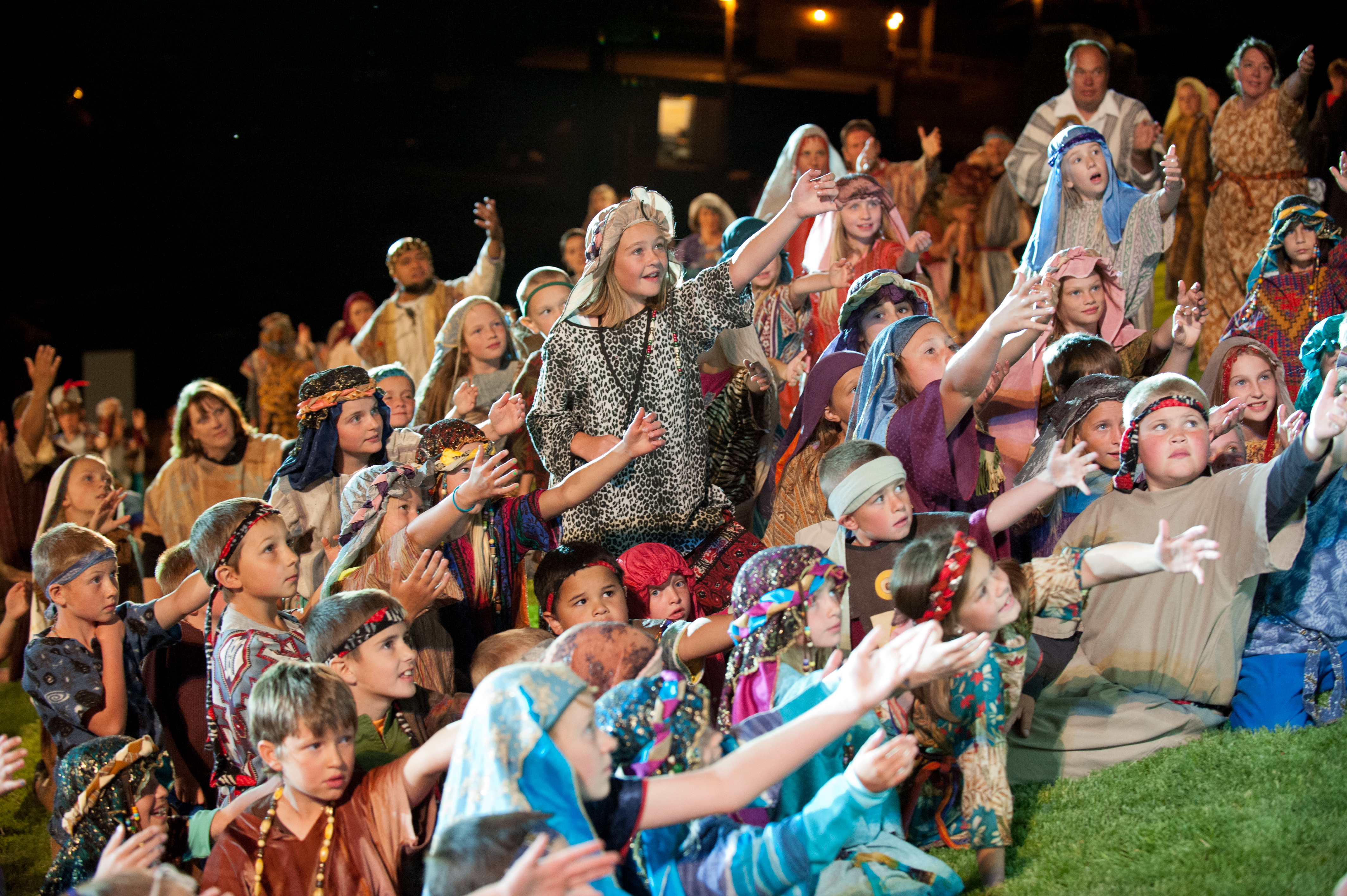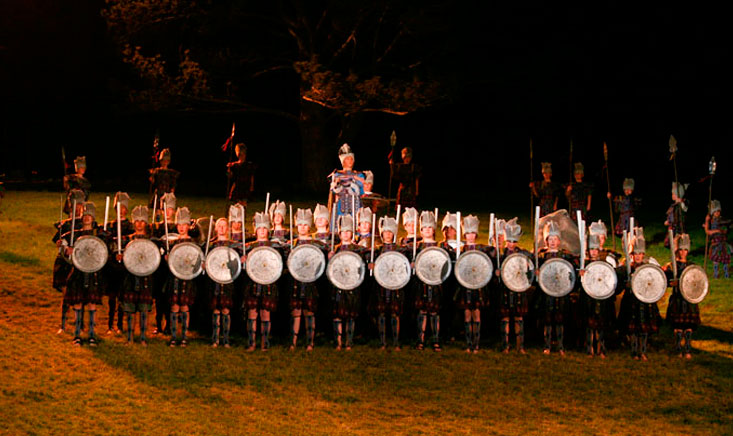
The first Mormon Miracle Pageant was blessed with its own miracle of sorts.
Former pageant President Doug Barton said the inaugural performance of the pageant, which was held in an outdoor fairgrounds in 1967, was caught in the middle of a major tropical storm.
The storm moved in with thunder, lightning and pouring rain, threatening to rain the pageant out. However, someone offered a prayer at the beginning of the pageant asking the elements would hold off until the pageant finished.
According to Barton, the prayer was answered. The weather cleared above the fairgrounds, allowing the show to go on.
“There was a major downpour all around the rodeo arena, but not one drop of rain fell on the pageant,” he said. “You could see blue sky if you looked straight up.”
Once the performance ended, the rain came crashing down, soaking everybody as they ran to their cars. Barton said this “first miracle” may have prevented the first pageant performance from literally becoming a wash and allowed the pageant to continue for more than half a century.
Debuting in 1967, the Mormon Miracle Pageant was originally planned as a local July 24 celebration, according to the pageant’s website. The show depicts scenes from the Book of Mormon, the formation of The Church of Jesus Christ of Latter-day Saints and the Saints’ westward migration.
The Manti Pageant has featured a live choir over the years and soundtrack contributions from Elder Melvin R. Ballard, Elder M. Russell Ballard’s father, and violinist Richard Nibley, the brother of former BYU professor Hugh Nibley, according to the pageant’s website.
Manti has hosted over 4.5 million visitors throughout the Pageant’s history, according to Barton. Manti Pageant historian Merilyn Jorgensen said nightly visitors often number close to 25,000 attendees — just under ten times Manti’s permanent population of 3,540 residents.
However, The Church of Jesus Christ of Latter-day Saints announced Oct. 27 that large productions like pageants were to be discouraged. This directive was later updated on Dec. 4 with changes regarding existing pageants; the Nauvoo, Mesa and British pageants are set to continue, but the Manti Pageant will take its final bow in 2019. The Hill Cumorah Pageant in Palmyra, New York, will also conclude following its 2020 performances.
While local leadership in Sanpete County ultimately made the decision to end the pageant, pageant President Milt Olsen said the Church agreed to let the pageant continue on the conditions that the pageant soundtrack would be updated and the production moved off the south lawn of the Manti Temple.
“There are a number of things that went into the decision (to end the pageant), but certainly one of them is if it’s not held on the temple hill, then we’re not going down the same path,” Olsen said.

Despite the Church’s offer to pay for the soundtrack to be rerecorded, waning interest from younger generations and the change in venue played into the decision to end the pageant. Olsen said local leadership decided the Church’s resources could be better used worldwide.
“The Church funding a pageant does not necessarily benefit families in Africa,” Olsen said. “When you view the Church as a worldwide organization that establishes policies to meet or support that organization, then the pageant becomes one of those things that doesn’t do that.”
Olsen said unity within the local community has been the most significant product of the pageant. Volunteers from the surrounding communities regularly assist in setting up chairs for thousands of visitors every night. Local volunteers also help prepare and serve the traditional pageant turkey dinner, Jorgensen said.
Jorgensen, who is also the author of the Manti Pageant History Book, said the pageant has been a way of life for many Manti residents. Jorgensen herself has filled several leadership roles over the years, including dance choreographer, costumer and director.
Jorgensen also said the pageant has been a labor of love for the community for decades. She said people in the community, including both Church members and nonmembers, often fill different roles every year. Additionally, Jorgensen noted that the pageant was entirely self-funded by the community.
Olsen said despite a few local restaurants and lodging businesses seeing a profit from pageant visitors, Sanpete County has primarily benefitted culturally from the pageant.
“The main thing people do when they come to town is they eat, and they go to the pageant. They don’t come here to shop,” he said.
Barton said many visitors often attend the pageant for a day before driving home without spending a lot of money. He said while there may be some economic impact, the loss in business wouldn’t devastate the community.
Sanpete County officials did not respond to a request to comment in time for publication.
Olsen said there are no plans to hold another event in place of the pageant. He also noted a congruity with the scriptural phrase “it came to pass” and an “attitude felt by many” that the pageant has fulfilled its purpose.
“The pageant ‘came to pass.’ It filled a significant need for many years that our culture today has not felt,” he said. “Now it’s going away since the need is no longer identified by priesthood leaders.”
The Mormon Miracle Pageant’s final performances will run from June 13—15 and 18—22. According to the Sanpete County events page, the pageant is free and begins at 9:30 p.m.




